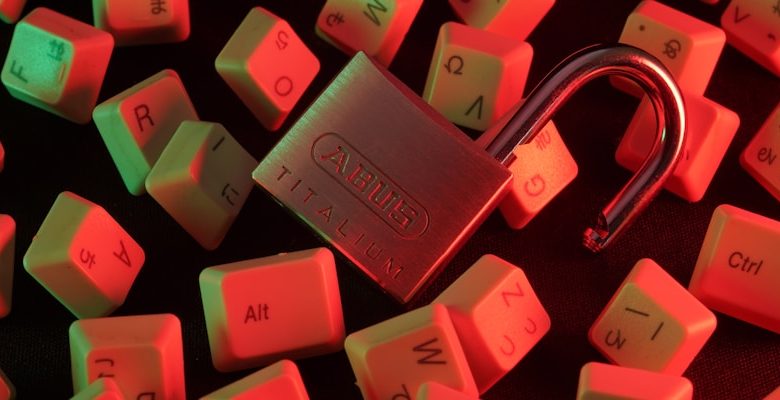How Crypto Wallets Work: A Deep Dive into Digital Asset Storage

- Understanding the basics of crypto wallets
- Exploring the different types of crypto wallets available
- The importance of private keys in securing your digital assets
- A step-by-step guide to setting up your first crypto wallet
- Comparing hot wallets vs. cold wallets: Which is right for you?
- Tips for safely storing and managing your digital assets in a crypto wallet
Understanding the basics of crypto wallets
Cryptocurrency wallets are digital tools that allow individuals to store, send, and receive digital assets such as Bitcoin, Ethereum, and other cryptocurrencies. To understand how crypto wallets work, it is essential to grasp the basics of their functionality.
One key aspect of crypto wallets is that they do not actually store the cryptocurrencies themselves. Instead, they store the private keys that provide access to the respective blockchain network and allow users to manage their digital assets. These private keys are essentially long strings of alphanumeric characters that act as passwords to authenticate transactions.
There are several types of crypto wallets, including hardware wallets, software wallets, and paper wallets. Hardware wallets are physical devices that store private keys offline, providing an extra layer of security against online threats. Software wallets, on the other hand, are digital applications that can be accessed on computers or mobile devices.
When a user wants to send or receive cryptocurrencies, they use their wallet to generate a transaction request, which is then signed with their private key. This signed transaction is then broadcasted to the respective blockchain network for validation and inclusion in the public ledger. Once the transaction is confirmed by the network, the recipient’s wallet will reflect the updated balance of the digital assets.
Exploring the different types of crypto wallets available
When it comes to storing digital assets, there are several types of crypto wallets available for users to choose from. Each type of wallet offers its own set of features and security measures to cater to the diverse needs of cryptocurrency holders. Let’s explore some of the most common types of crypto wallets:
1. **Hardware Wallets**: Hardware wallets are physical devices that store the user’s private keys offline, making them less susceptible to hacking and online threats. These wallets are considered one of the most secure options for storing digital assets.
2. **Software Wallets**: Software wallets are digital applications or programs that can be downloaded and installed on a computer or mobile device. They provide users with easy access to their funds but may be more vulnerable to cyber attacks compared to hardware wallets.
3. **Paper Wallets**: Paper wallets involve printing out the user’s private and public keys on a physical piece of paper. While paper wallets are secure from online threats, they can be easily damaged, lost, or stolen in the physical world.
4. **Web Wallets**: Web wallets are online platforms that allow users to store and manage their digital assets through a web browser. While web wallets offer convenience and accessibility, they are often targeted by hackers due to their online nature.
5. **Mobile Wallets**: Mobile wallets are applications designed for smartphones and tablets, allowing users to access their funds on the go. These wallets are convenient for everyday use, but users should be cautious of potential security risks associated with mobile devices.
In conclusion, the type of crypto wallet you choose will depend on your individual preferences and security requirements. It’s essential to research and understand the features of each type of wallet before deciding on the best option for storing your digital assets.
The importance of private keys in securing your digital assets
Private keys play a crucial role in securing your digital assets in a crypto wallet. These keys are essentially long strings of alphanumeric characters that act as a password to access and manage your cryptocurrencies. Without the private key, it is virtually impossible to retrieve or transfer your digital assets, making it essential to keep it safe and secure.
When you create a crypto wallet, a pair of keys is generated – a public key and a private key. The public key is used to receive funds, much like an account number, while the private key is used to authorize transactions. It is important to never share your private key with anyone, as it grants full control over your digital assets.
One of the key advantages of using private keys for digital asset storage is that they provide a high level of security. As long as your private key remains confidential, your cryptocurrencies are safe from unauthorized access. It is crucial to store your private key in a secure location, such as a hardware wallet or a piece of paper kept in a safe place.
A step-by-step guide to setting up your first crypto wallet
Setting up your first crypto wallet is a crucial step in the world of digital asset storage. Follow these simple steps to create your own secure wallet:
1. **Choose a reputable wallet provider**: Look for a wallet that has a good reputation for security and user-friendly interface. Popular choices include **Coinbase** and **Trezor**.
2. **Download the wallet software**: Once you’ve selected a wallet provider, download the software onto your device. Make sure to only download from the official website to avoid any potential scams.
3. **Create a new wallet**: Open the software and follow the prompts to create a new wallet. You will likely be asked to set up a password and write down a recovery phrase. Make sure to store this information in a safe place.
4. **Receive your first digital assets**: After setting up your wallet, you can now receive your first digital assets. Share your wallet address with others to receive payments or transfers.
5. **Backup your wallet**: It’s essential to regularly backup your wallet to ensure you don’t lose access to your assets. Most wallets provide an option to backup your wallet either through a file or recovery phrase.
6. **Enable two-factor authentication**: For an extra layer of security, consider enabling two-factor authentication on your wallet. This will help protect your assets in case your password is compromised.
By following these steps, you can set up your first crypto wallet and start securely storing your digital assets. Remember to always prioritize security and keep your wallet information safe to avoid any potential risks.
Comparing hot wallets vs. cold wallets: Which is right for you?
When it comes to deciding between hot wallets and cold wallets for storing your digital assets, it is essential to consider your individual needs and preferences. Hot wallets are connected to the internet, making them convenient for frequent transactions but also more vulnerable to hacking. On the other hand, cold wallets store your assets offline, providing an extra layer of security but requiring more time and effort to access when needed.
Hot wallets are like your everyday wallet that you carry around with you, while cold wallets are more akin to a safe deposit box in a bank. Hot wallets are ideal for those who need quick access to their assets and are willing to accept the associated risks. Cold wallets, on the other hand, are better suited for long-term storage of large amounts of assets that you do not plan on accessing frequently.
Ultimately, the choice between hot wallets and cold wallets comes down to your individual risk tolerance and usage patterns. If you are a frequent trader or investor who needs quick access to your assets, a hot wallet may be the right choice for you. However, if security is your top priority and you are willing to sacrifice some convenience for peace of mind, a cold wallet may be the better option.
In conclusion, both hot wallets and cold wallets have their pros and cons, and the right choice for you will depend on your specific needs and preferences. It is essential to weigh the benefits and drawbacks of each type of wallet carefully before making a decision to ensure that your digital assets are stored securely and conveniently.
Tips for safely storing and managing your digital assets in a crypto wallet
When it comes to safely storing and managing your digital assets in a crypto wallet, there are a few key tips to keep in mind to ensure the security of your investments. One important tip is to always use a hardware wallet, such as a Ledger or Trezor, for storing large amounts of cryptocurrency. These hardware wallets offer an extra layer of security by keeping your private keys offline, away from potential hackers.
Another tip is to enable two-factor authentication (2FA) on your crypto wallet for an added layer of security. This means that in addition to your password, you will need to provide a second form of verification, such as a code sent to your phone, before accessing your wallet. This can help prevent unauthorized access to your funds.
It’s also important to regularly back up your wallet and keep your recovery phrase in a safe place. This recovery phrase is a series of words that can be used to restore access to your wallet if it is lost or stolen. By keeping a secure backup of this phrase, you can ensure that you will always be able to access your funds, even if something happens to your wallet.
Lastly, be cautious of phishing scams and only use reputable wallets and exchanges to store and manage your digital assets. Phishing scams are common in the crypto world and can result in the loss of your funds if you are not careful. By sticking to well-known and trusted platforms, you can minimize the risk of falling victim to these types of scams.



